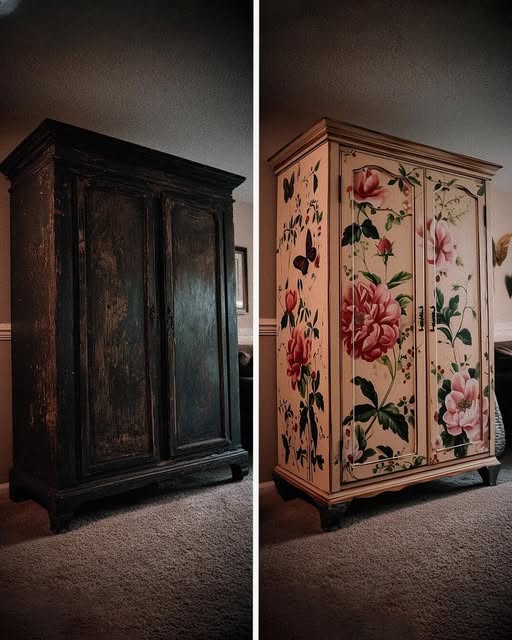My sister-in-law, Vanessa, recently passed along an old dark oak armoire she inherited from her grandmother. It was faded, cracked, and worn, but she didn’t want it anymore. She made it clear: “Ugh. I can’t stand this hunk of junk. Makes my new house look cheap. I’m sending it to you. You pay delivery. Do whatever you want with it. I never want to see it again.”
I even double-checked if I could paint it, and she waved me off: “Do whatever. I’m done with it.”
I got to work. Sanded every surface by hand, replaced all the hardware, and painted it a beautiful cream with hand-painted flowers and butterflies. I spent nearly $1,000 and countless hours transforming it. When it was finished, it looked like a boutique hotel piece worth $5,000.
Fast-forward to my husband’s birthday. Vanessa walked in, saw the armoire, and her jaw dropped. Then she said: “You know, I changed my mind. I want the armoire BACK. It’s mine. How could you take what my grandma left me? This is an heirloom!”
At first, I almost laughed. She had called it junk, made me pay to move it, and now suddenly it was “priceless”? She accused me of being selfish.
I knew she’d try to pull a stunt, so I decided to teach her a lesson. I smiled and said: “Of course… you can have it back. But on ONE CONDITION: you have to reimburse me for every penny I spent, and you have to redo all the labor yourself — sanding, painting, and hand-painting every detail.”
Her face went pale. She stammered, realizing she wasn’t ready to invest the time or money to undo all my work. I simply smiled and said: “Then I guess it stays with me.”
The armoire remains in my home, beautiful as ever, and Vanessa learned that “heirloom” only counts when you actually care for it.
